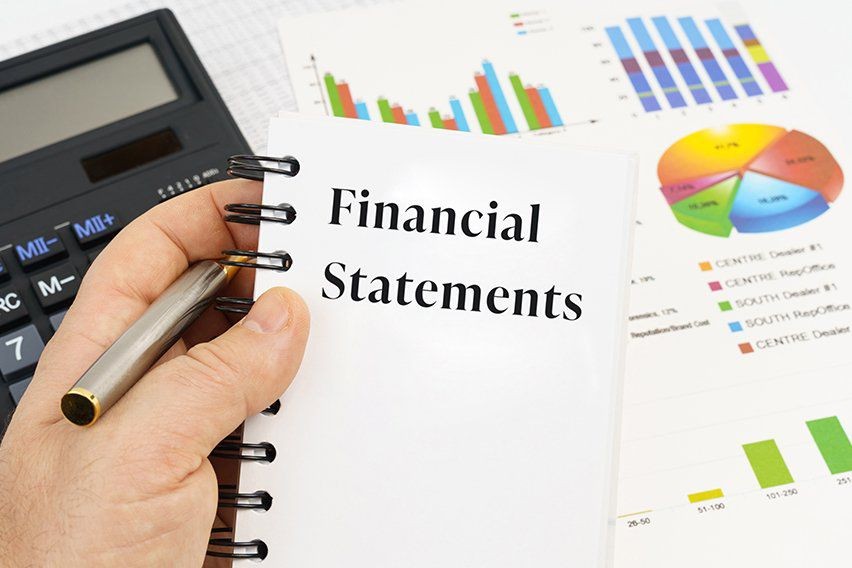Indonesia is preparing to enter a new era in corporate reporting. Amid rising global expectations for sustainability transparency, the two international standards, IFRS S1 and IFRS S2, are seen as strategic keys to strengthening Indonesia’s position within the increasingly green and ESG-focused global investment ecosystem.
Released by the International Sustainability Standards Board (ISSB) in June 2023, IFRS S1 and S2 are designed to become a harmonized global baseline for sustainability reporting, addressing the complexity and fragmentation of existing ESG frameworks such as GRI, TCFD, SASB, and others.
What are IFRS S1 and S2?
IFRS S1 – General Requirements for Disclosure of Sustainability-related Financial Information
IFRS S1 sets out the general principles for reporting financial information related to sustainability risks and opportunities. The aim is for entities to present information that is useful to investors and creditors in making resource allocation decisions over the short, medium, and long term.
Key Components of IFRS S1:
- Governance
Describes how sustainability risk oversight is carried out by the board and management. - Strategy
Reflects the entity’s strategy towards sustainability issues and their impact on the business model and value chain. - Risk Management
Explains the processes for identifying, assessing, and monitoring sustainability risks affecting the entity’s prospects. - Metrics & Targets
Presents the metrics and targets used to measure ESG performance.
IFRS S1 emphasizes the importance of materiality, information is material if its omission or misstatement could influence investor decisions.
IFRS S2 – Climate-related Disclosures
IFRS S2 is a more in-depth thematic standard focused on climate-related risks and opportunities. It adopts and expands the structure of the Task Force on Climate-related Financial Disclosures (TCFD).
Key Components of IFRS S2:
- GHG emissions disclosures (Scope 1, 2, 3) using the GHG Protocol
- Climate scenario analysis to assess the resilience of a company’s strategy
- Climate mitigation and adaptation strategies
- Climate targets and progress toward them
- Industry-specific disclosures based on SASB standards
IFRS S2 cannot stand alone — entities applying S2 must also apply IFRS S1 as it provides the general reporting framework.
Structure of IFRS S1 and S2: Convergence of Financial and ESG Reporting
IFRS S1 and S2 integrate widely recognized standards :
| Standard Source | Relevant with IFRS S1 & S2 |
|---|---|
| TCFD | Four disclosure pillars (governance, strategy, risk, metrics) |
| SASB | Industry-specific guidance and metrics |
| CDSB Framework | Guidance for water and biodiversity disclosures |
| Integrated Reporting | Value creation and stakeholder relationships |
| IASB Framework | Concepts of materiality and consistent reporting entities with financial statements |
Gap Analysis: A Non-Negotiable Phase
Gap Analysis: A Non-Negotiable Phase Gap analysis is a systematic process for comparing the current reporting status and internal readiness against IFRS S1 and S2 requirements. Without it, companies cannot determine:
- Where they already meet the standards
- Where they have major deficiencies
- What the next implementation priorities are
Gap analysis also helps avoid greenwashing, data inconsistency, and audit failures in sustainability reports that will become part of general purpose financial reporting.
Steps for Conducting IFRS S1 and S2 Gap Analysis
1. Mapping Standard Requirements
Start by unpacking IFRS S1 and S2 contents based on the four disclosure pillars. List all applicable disclosure requirements for your industry, including sector-specific metrics from SASB.
2. Assessing Internal Capabilities
Conduct an internal audit of systems, policies, procedures, and ESG data. Key questions:
- Does the company have an ESG team or sustainability officer?
- Is there a sustainability committee at the board level?
- Are sustainability risks integrated into ERM?
- Are there consistent, measurable metrics for GHG, energy use, water, waste, etc.?
3. Identifying Gaps
Compare actual conditions with IFRS requirements. Classify results as:
- Fully Compliant
- Partially Compliant
- Not Compliant
Use a matrix like this:
| Area Disclosure | Status | Gap Description | Action Plan |
|---|---|---|---|
| Emisi Scope 1, 2, 3 | Not Compliant | No GHG measurement system | Implement GHG Protocol |
| Tata Kelola ESG | Partially Compliant | No formal committee | Form ESG committee under the board |
| Scenario Analysis | Not Compliant | No tools for climate resilience simulation | Use IPCC or TCFD tools |
4. Conducting Materiality Assessment
Identify sustainability risks and opportunities that materially affect business prospects (cash flows, enterprise value) using input from investors, stakeholders, and the value chain.
5. Action Plan and Timeline
Develop an implementation roadmap:
- Quick wins for partial compliance
- Tech investments (e.g., ESG data platforms)
- Staff training and capacity building
- Reporting timeline (leverage transitional reliefs for the first year)
6. Reporting Structure and IT System
Alignment ESG reporting systems must be integrated with financial reporting. Ensure your ERP or ESG tools can capture and verify IFRS S1/S2-required data, especially Scope 3 emissions involving vendors and customers.
Case Study: Energy Company Gap Analysis
A geothermal energy company in Indonesia conducted an IFRS S2 gap analysis and found:
- No Scope 3 methodology → must adopt GHG Protocol
- No scenario analysis → must adopt IPCC or NGFS frameworks
- Strong governance → only needed to expand audit committee mandate
These steps were formalized in a 12-month action plan with support from ESG consultants, public accountants, and legal teams.
Conclusion: Gap Analysis Is Not Optional — It’s Essential
Gap analysis is not just an administrative task — it is the foundation for building investor trust, improving internal efficiency, and complying with global standards that will become the new capital market norms.
For Indonesia, the sooner companies conduct gap analysis on IFRS S1 and S2, the sooner they will be ready to:
- Access green capital
- Comply with global supply chain requirements
- Avoid reputational risk from unreliable reporting
Why This Matters for Indonesia?
1. Addressing Framework Fragmentation and Greenwashing
Many Indonesian companies use GRI, SDGs, and POJK 51/2017 for sustainability reporting. However, there is no standardized framework explicitly linking sustainability issues to financial prospects. IFRS S1 and S2 bridge that gap.
2. Strengthening the Investability of Domestic Companies
Global investors now demand ESG reporting that is:
- Globally consistent
- Auditable
- Connected to financial statements
For renewable energy sectors, IFRS S2-based disclosures such as emissions and transition strategy are critical for accessing green finance and sustainability-linked loans.
Challenges Ahead ?
1. Infrastructure and Data Readiness
Scope 3 emissions, scenario analysis, and consistent ESG data remain technical challenges, especially for MSMEs and non-issuer entities.
2. Initial Implementation Costs
ISSB acknowledges these and offers first-year reliefs:
- Climate-only disclosure (IFRS S2) allowed
- No need for comparative data in the first year
- Scope 3 reporting not mandatory in year one
- Timeline need not align with financial reporting in year one
Recommendations for Indonesia
- Regulators (OJK, Ministry of Finance)
Adopt phased implementation like Singapore and Japan - Public Companies:
Start with readiness assessments and ESG reporting roadmaps - Accountants and Auditors:
Build capacity to provide assurance based on ISAE 3000 - IAI dan Akademisi:
Promote IFRS S1 and S2 literacy through curriculum and training
Final Conclusion: IFRS S1 and S2 Are Not Just Obligations, But Opportunities
IFRS S1 and S2 will become the “universal language” for sustainability reporting, not just because of regulatory pressure, but because investors will rely on them for long-term decision-making.
For Indonesia, a structured and timely adoption will:
- Improve capital market integrity
- Accelerate access to ESG funding
- Signal to the world that Indonesia is serious about the green economy
“In the next decade, financial statements without sustainability disclosures will be seen as incomplete. IFRS S1 and S2 ensure that sustainability information meets the same level of rigor as financial information.” — IAI Webinar, February 2024


